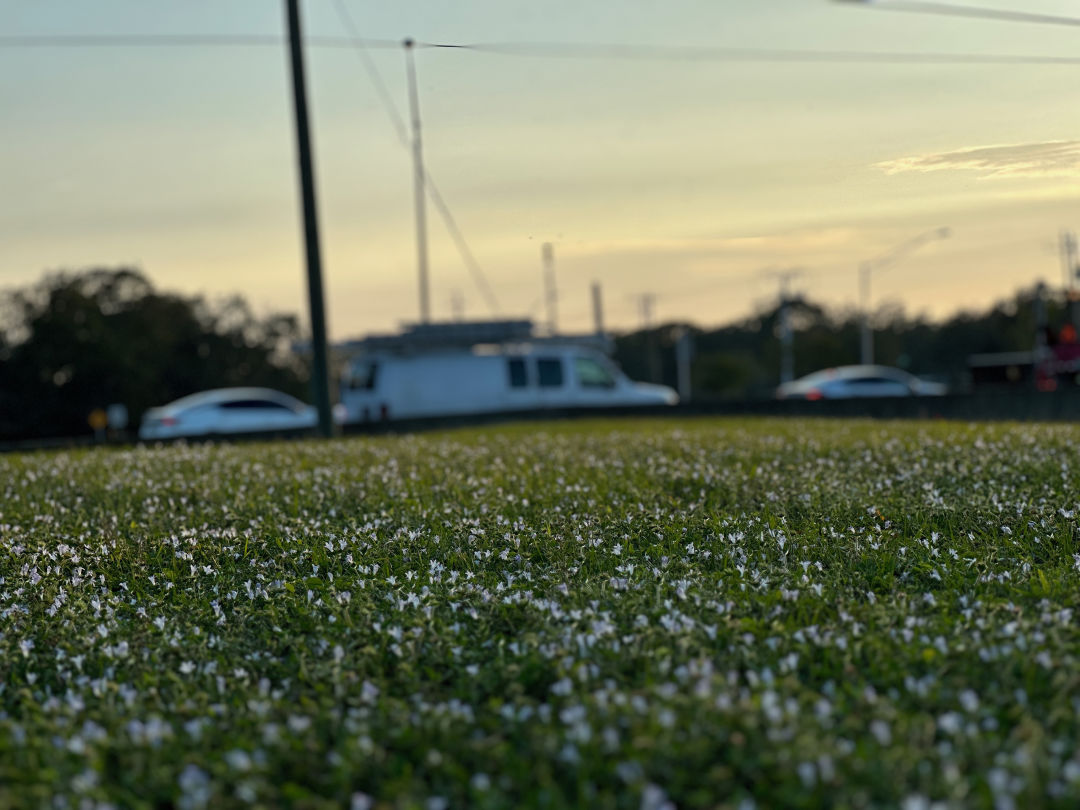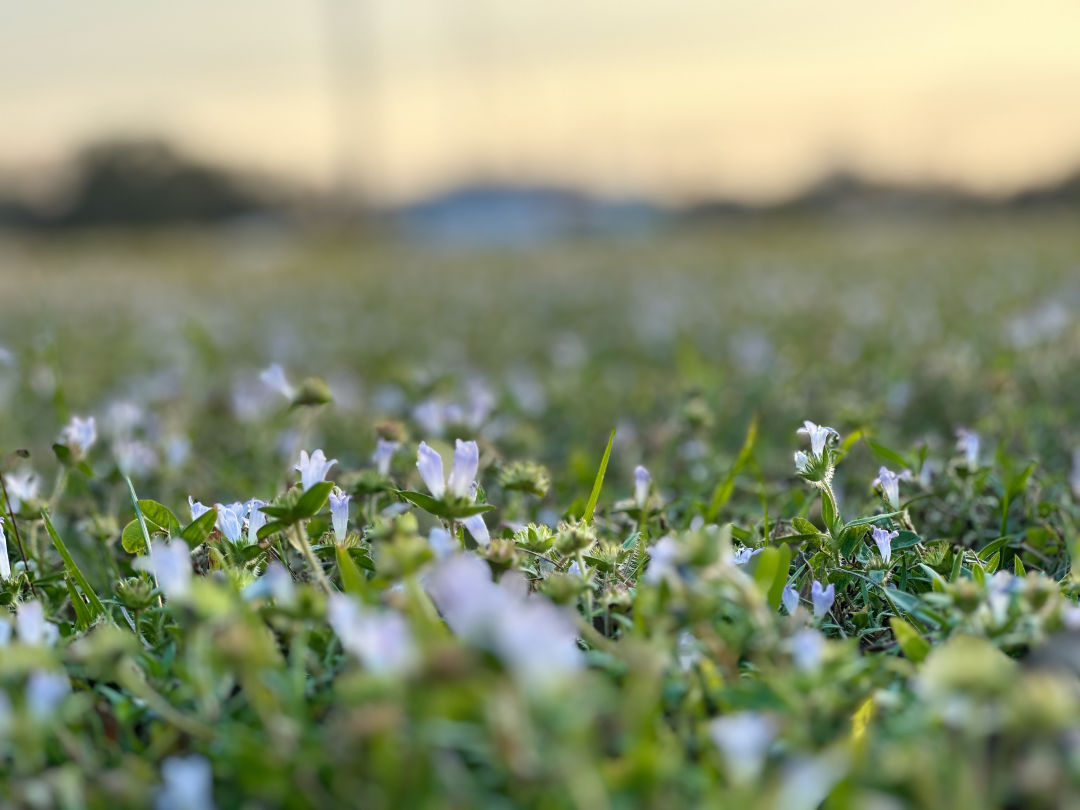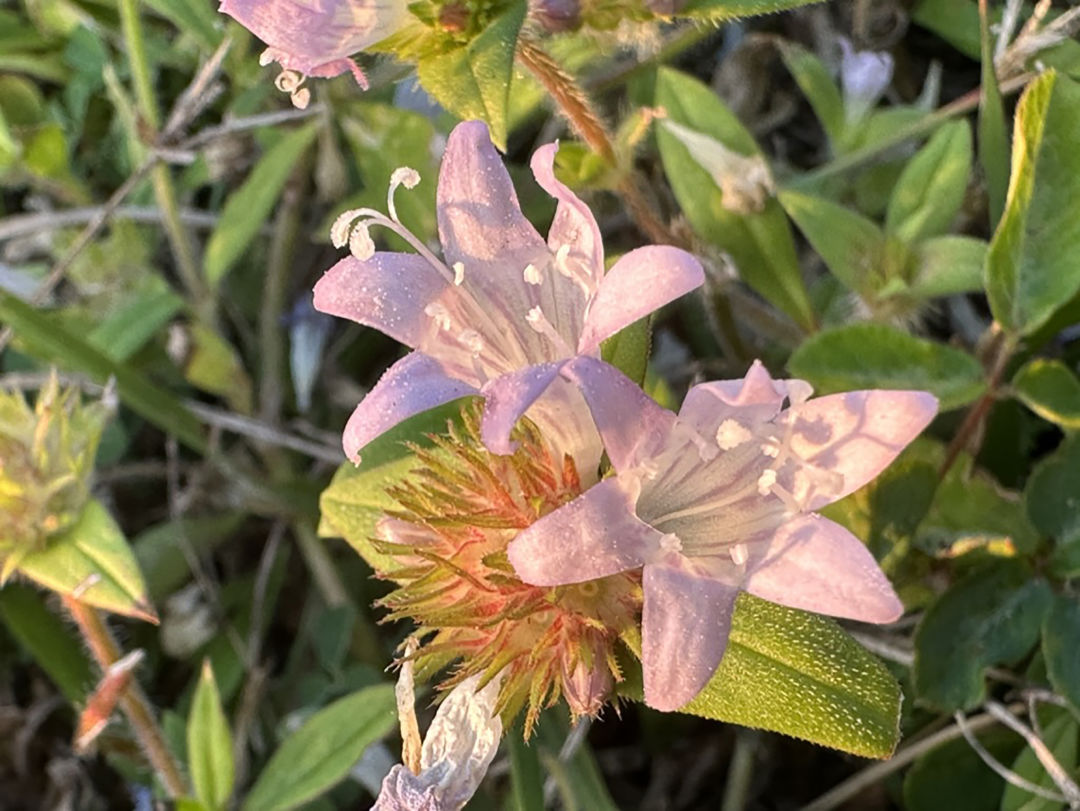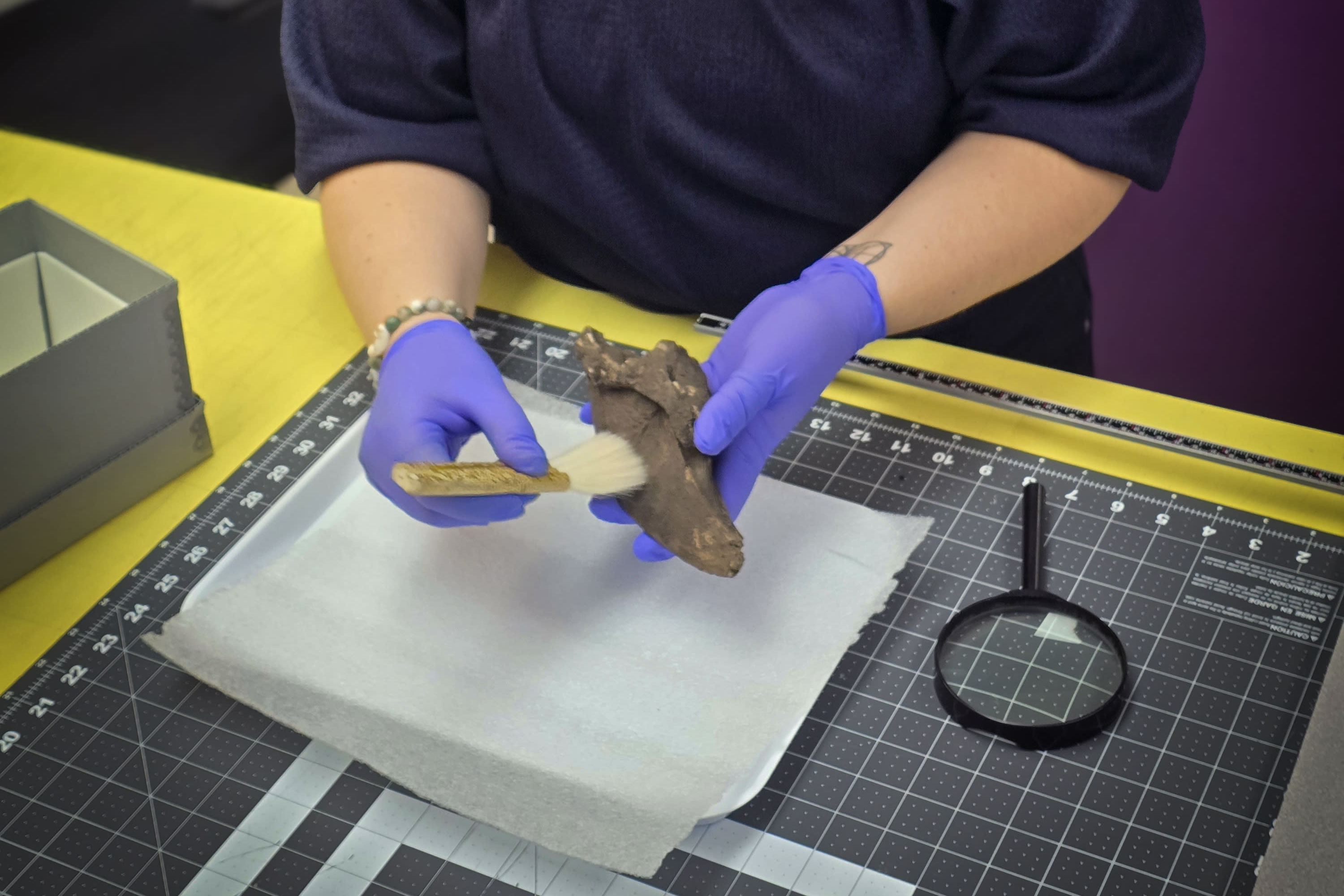Richardia Grandiflora Is a Different Kind of Florida Snow

Image: Isaac Eger
The last time it snowed in Sarasota was December 22, 1989. An arctic cold front sloped southeastwards and brushed the Gulf Coast with below freezing temperatures.
A winter wonderland it was not. It was more like when you leave your freezer door ajar and soft ice crystals coat your microwave dinner boxes. Barring some freak weather event, I wouldn’t expect a white Christmas in the Sarasota area this year or any time in the foreseeable future. But in the 30 years since our last snow, we have seen the proliferation of a different kind of snow—Richardia grandiflora, also known as “Florida snow.”
You’ve likely seen Florida snow dusted across grassy terrain, home lawns and highway medians. It’s a perennial wildflower the color of white and faded lavender. Its roots are deep and it is a prodigious producer of seeds. It spreads and sheets out, giving the appearance of snow on our tropical landscapes.

Florida Snow, also known as Richardia grandiflora or 'Florida pusley.'
Image: Isaac Eger
While some find Florida snow beautiful, the flower is controversial. According to Forest Hecker, community outreach specialist at Sarasota County UF/IFAS Extension and Sustainability, Florida Snow is an invasive species from South America. But not all invasives are equal. “Florida Snow is well documented and officially labeled as a Category II invasive,” Hecker says. “Which basically means it is widespread, and spreading quickly, but it isn't invading natural areas.” This means that it doesn’t out-compete native plant species in their natural habitat.
Where Florida snow does thrive is “disturbed” areas. In other words, anywhere you might find humans and their infrastructure. That’s why you’ll see Florida snow all over medians and edging along sidewalks. But where Florida snow is most fruitful is our lawns.
Turf grass is perfect habitat for Florida snow. The flower grows low to the ground, so trimming your lawn gives it the conditions it needs to thrive. Lawn purists consider it a nuisance weed and go through great lengths to get rid of the stuff. Trouble is, it’s a real pain to remove. Florida snow grows so low, in fact, that it escapes mower blades. Richardia grandiflora is incredibly drought resistant, and the state of Florida gets drier and drier each year. Most experts warn against using herbicides on the little flowers, and recommend pulling them out by hand instead. But if Florida snow has overcome more than 50 percent of your lawn, the only cure is a total turf replacement.
For those of you who think all invasives are evil and must be eradicated, it’s important to remember that all six grasses—Bahia, Bermuda, carpet, centipede, St. Augustine and zoysia—are all non-native to Florida.
Instead, we should surrender to the star-shaped flowering plant. Unlike the turf grass it conquers, Florida snow attracts pollinators of all kinds and peaks during a time when few other plants are flowering.
“My personal recommendation is accepting it in our lawns unless it is relabeled as Category I,” Hecker says. “People accepting 'mixed mowable mosaics' for lawns would be a major step in protecting our natural resources.”
Hecker doesn’t personally disparage turf grasses, but says that striving towards a perfect monocultured lawn leads to high use of fertilizers, herbicides and irrigation.

A close up of Florida Snow.
Image: Isaac Eger
I’m not so gracious when it comes to turf grasses. They're the most irrigated crop in the United States. Three times as much water is spent irrigating our lawns than corn. We dump millions of pounds of fertilizer on our lawns and then we scratch our heads ask ourselves, "How are we going to stop all this red tide?"
Nature has offered us a solution. Florida snow is a drought-resistant, erosion-controlling, pesticide-free and, most importantly, beautiful flowering plant that requires little maintenance. It’s a Christmas miracle.



